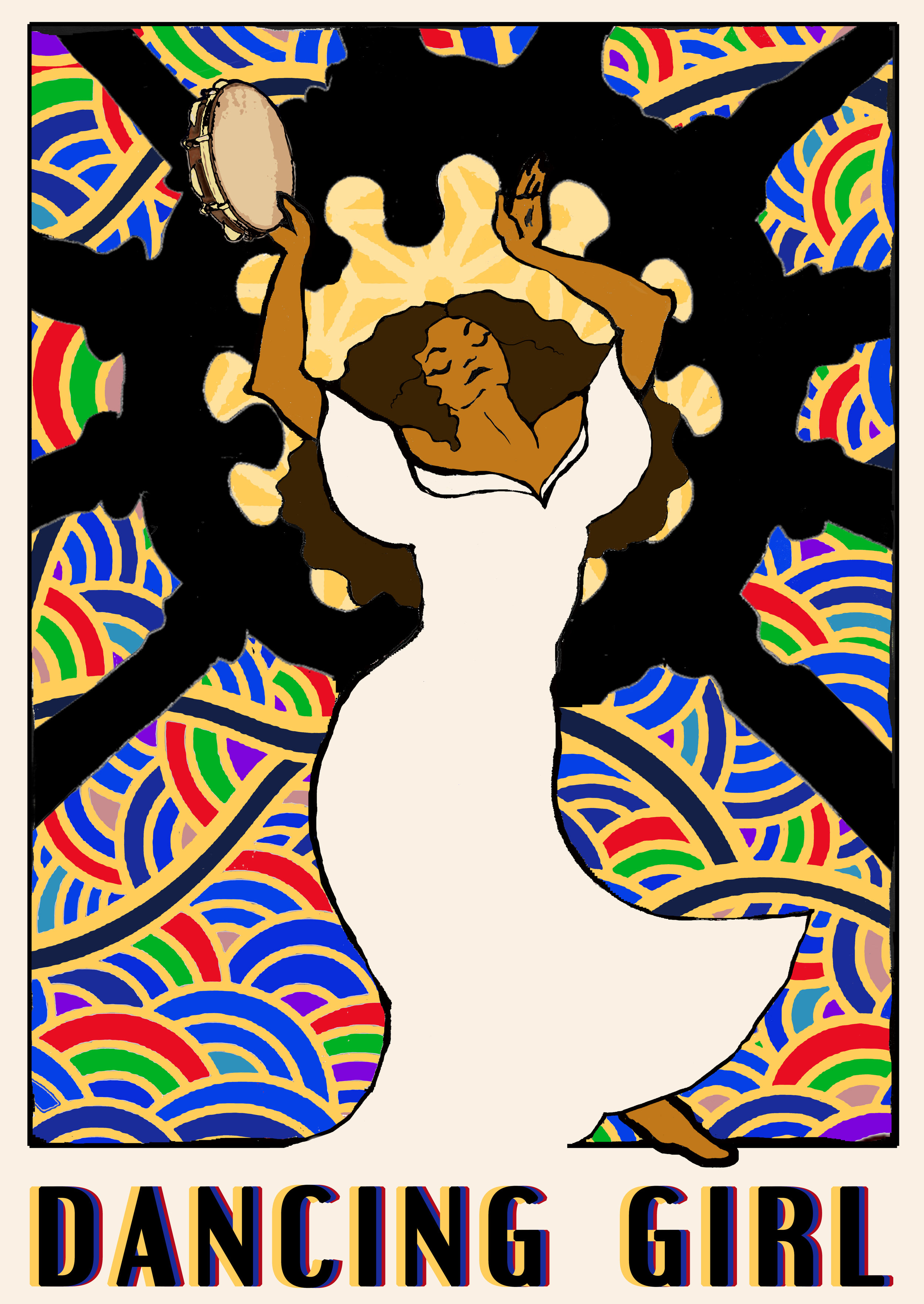"Dancing Girl": A Unique Rehearsal Process
Sarah Gordin
A crowded rehearsal room at Playwrights Downtown: six people “on stage,” three of which are actors and the others are actor/translators of American Sign Language for the three characters. Twelve people are sitting on the sides of the room, waiting for instructions from the Director (the remarkable Jenny Beth Snyder). Two people are translating every word said in the room, to ASL for the non-hearing actors and then back to spoken English again. There are seven creatives behind the tables besides the director, Playwrights (Elinor T. and Drew Vanderburg), Choreographer (Elizabeth McGuire), Director of ASL (Anne Tomasetti), Stage Manager (Mairead Kress), Intimacy Director (Nancy Cantine) and Fight Captain (Andres Robledo). All in all, thirty-seven people are working on this show! You might be wondering at this point where I fit in. I am the Production Assistant which means that I help with whatever is most needed; i.e, setting up the room, getting props from storage, filling in for an actor who is absent, getting the wifi from the front desk. In exchange for my contribution, I get to observe and take notes during the process from start to finish. As a theatre major and director, I have been learning so much about the new play process just by being in the room.
Dancing Girl is an adaption of the famous story, The Hunchback of Notre Dame, that centers around Esmeralda instead of the usual story which centers around Quasimodo. This adaptation really leans into the darkness of the plot. Elinor, one of the Playwrights, says about her inspiration for this show that, “in all the adaptations of this story, Esmeralda was not a character that had much agency. The whole story swirls around her but it is actually about these four men that have decided that she is the foundation for their existence and it just felt wrong. We really wanted to take these problematic characters and bring in elements from all the different versions and then see how they would fare with 2019 sensibilities within the structure of medieval times.” So there you have it, reader, that is what Dancing Girl is about. Oh, and then add in American Sign Language inspired by the fact that Quasimodo is actually deaf from the bells in the original novel. Additionally, Elinor commented that, “having Quasimodo represented by a deaf actor on stage opened our eyes to what was possible for this piece. While we have written a play that we are accustomed to seeing in theatre, there are so many ways of experiencing language and connection which we have leaned into with this production.” Jenny, the Director, mentioned that, “ASL was a very unique and new challenge that actually ended up with an army of creative people. All of us had to work a little harder in the room to communicate which created a bond of the whole team (cast and crew) wanting to create this play in this unique way.”
As Dancing Girl is a festival show, with only three performances, the rehearsal process is short. There is less than a month to have a full-length play ready to be performed with all of these different elements, not just ASL, but also the language of dance, along with fight choreography. The first week and a half was dedicated to tablework. This is especially important with a new play and translations as the translators figure out what makes the most sense in ASL and also for the speaking characters. Tablework also allows the director and actors to really explore what the text is trying to put forth with the plot and relationships. Many a line was cut or changed during tablework, requiring the actors to make changes to the lines that they already memorized. After tablework, the cast went straight into a day dedicated to the fight and dance choreography to really give the most time for the actors to achieve these skills.
Blocking was next in the process. There are translators for each character. For example, there is Esmeralda and then the Esmeralda translator who is in the scene at the same time. So, in addition to the actors, Jenny had to figure out how to maneuver double the bodies on stage which she does by using the magical black rehearsal blocks (which will also be used in the show), visualization, and talent. When asked what themes she is using to direct, Jenny said that she is using the question of, “What is an outcast and how do we treat them? There is a general sense of Us versus Them that is super problematic within this play. I am trying to visualize in my directing that swirling nature of that connectedness. We really love to put people in two different camps so it really is more of a commentary on society right now and that whole dialogue between the two sides is being led by a woman. This new take is making it different than any other Hunchback story and is what inspires my directing.”
Now that the blocking rehearsals are finished, the cast will head into work throughs and runs, putting the pieces of the puzzle together. There is only a week to do this and then one day of technical rehearsal in the theater. However, even quality theater can be created quickly when everyone is working hard. Elinor said, “I am excited for audiences to see what is possible when you open the door to theatre that is not like theatre that you are used to seeing. Gosh, I’m excited for that!
Dancing Girl is playing at The Connelly Theater as part of the She NYC Arts Festival on June 22nd at 12:30PM, June 23rd at 12PM or June 24th at 7PM. Tickets ($20) are available for advance purchase at www.shenycarts.org.
